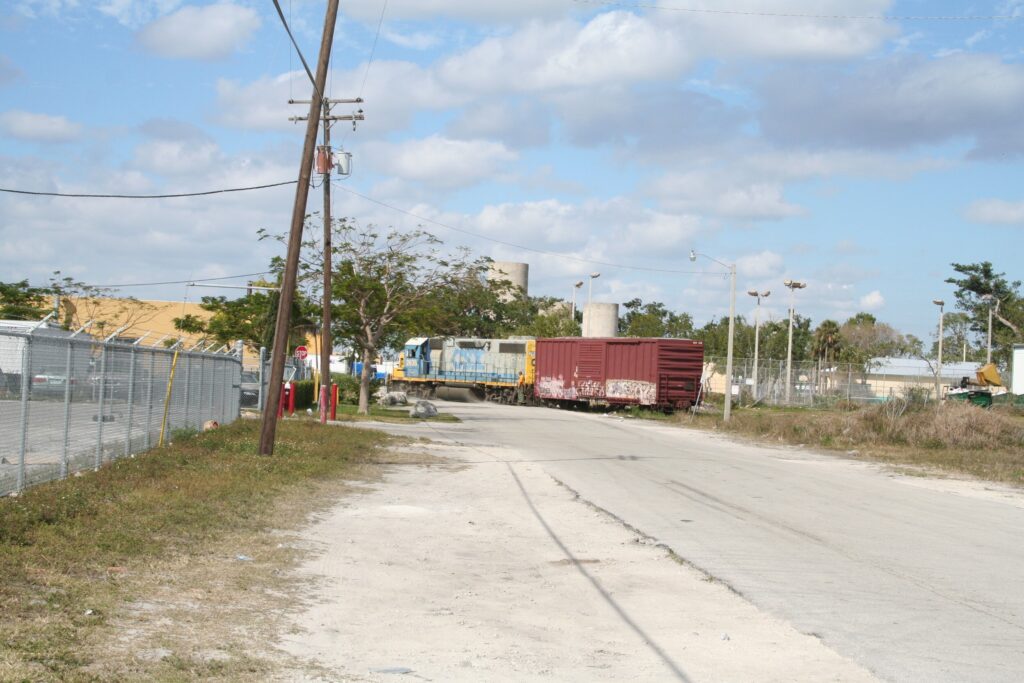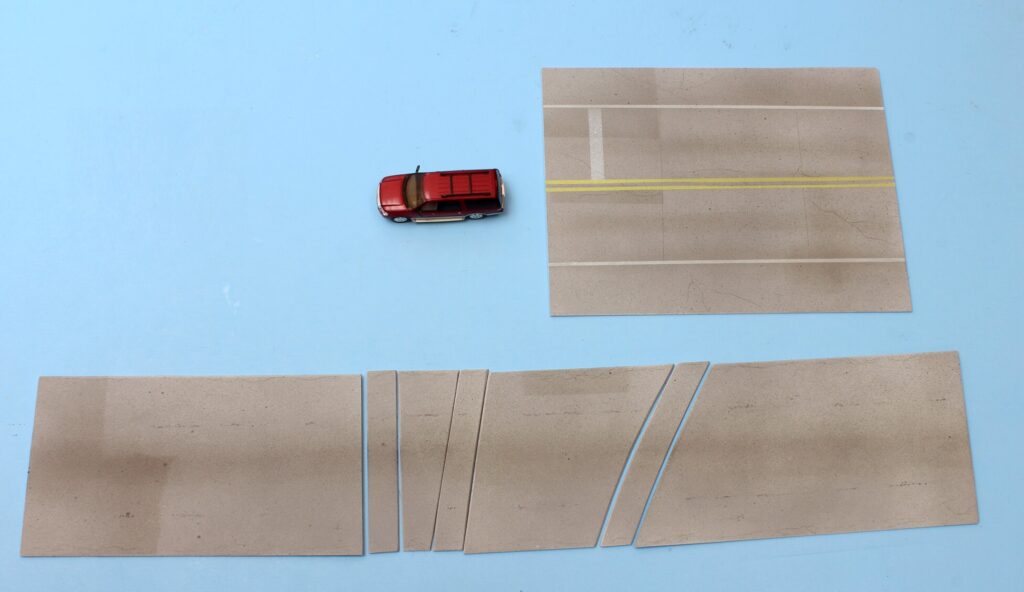
Looks can be deceiving. The above scene is far from simple and modeling it effectively would involve studying and truly seeing what is going on, understanding the challenges, and coming up with methods to re-create it in miniature. Note the subtle color blends on the shoulder. Note the way the grass feathers into the shoulders. Note the complexity of the pavement tones. The mesh on the fence is so fine you can barely see it (meaning it can’t be represented with window screen).
“Good enough”? Is the approach you’re taking in fact “good enough”? It may very well be. It may very well have to be. But, it’s worth thinking about. Is it a conscious, pragmatic, decision or did you arrive there by default?
Modeling railroading has an embedded culture which, for the most part, really hasn’t changed much in the last half century. It works and serves the largest percentage of hobbyists, the casual recreationalists, well. It comes from a time when layouts were much larger and, if you wanted to get anything done, you couldn’t spend two weeks weathering a manhole cover! In a nutshell it’s the “good enough” approach of “let’s get a decent representation of the prototype down, move on to the next section, and run some trains”. Nothing wrong with that. A slippery slope comes into play though when people move from thinking, “hey, not bad” to “Wow that looks amazing!”. It does the job, it serves its purpose, it may be a fit for your available time and commitment level but to think it’s “amazing” is a reach.
Let’s break down the “good enough” approach. At the execution level you are dealing with a relatively small range of color tones, (usually just a single color), hard line transitions between colors, and generally more vibrant and saturated hues. To reach the objective of more speedy, “get ‘er done” modeling, it emphasizes very few textures. It emphasizes a “check the box” aka “placeholder approach”. For example, scene ABC has a fence in it. Drop a 1/87 fence in the scene, check the box, and call it job done. The fact that the fence posts are twice scale size and the mesh is five times oversize is considered irrelevant because the placeholder box has been checked. We are also strongly oriented towards a caricature philosophy that feels any scene needs to be amped up. It’s a salt your food before tasting it, dump hot sauce on everything, culture. “I can’t have a quiet street. Too boring. I’ll put a cop chasing a robber in there to liven things up.” There is also a fair amount of inbreeding as far as information sources and techniques go. We operate in a bubble where the same methods and materials are used over and over and generally only taken from within the model railroading hobby community. On a good day we may steal something from our more skilled cousins in the military modeling aisle. Again, that approach works pretty well overall but not at the upper levels of execution.
Getting back to my “Audience of One” mantra, if you’re happy, that’s all that matters. If you have a larger railroad, you realistically need to stay on that path. Although this is our culture, it’s important to understand that it comes nowhere close to approaching what can be achieved, even by the typical modeler. Achieving those far better results has to matter to you though. There is zero shame in not wanting to move to the next skill level. For example, I’m a runner. I’m content with the status quo (i.e. pretty damn slow) and have no interest whatsoever in getting any better or faster. I still enjoy it though.
But what if achieving exceptional visual results does matter to you? How do you move the needle? Skill does matter….to an extent. However, what’s lost in the shuffle is the big first step, the skill that is generally skipped. It’s understanding what the critical visual issues are in the first place. You can’t focus on something if you don’t even know it exists. Without this understanding as a starting point, there is no way to move to the next level. For example, being skillful at detailing the interior of a structure isn’t going to change the outward appearance of the layout that much. Being able to skillfully model underbrush, or color a street, will have a major impact.
Beyond “Good Enough” means:
Attention to Color Selection: Selecting the correct hue and saturation level is not easy. There is a tendency to go too dark and overly saturated. What color is that road? Think you know? Guess again. It’s probably much lighter than you think.
Increasing Color Count: In any given scene it’s exceedingly rare to be looking at only one color. There are numerous hues all very close to on another on the color spectrum. The model railroad approach is one or two colors. The artistic approach will probably entail a half dozen or more.
Focusing on Color Transitions: This is a hard one. Particularly with scenery and weathering, transitions from one hue to the next are very, very subtle. The blends are feathered in. Learning how to do that takes both awareness and practice. In model railroading the tendency leans towards hard, sharply defined, borders and transitions. It’s a skill worth learning.
More Textures. As with color, in the real world (scenery specifically), we are dealing with not one texture, which is the model railroad approach, but many subtle textures. Many of those textures are very fine.
Avoiding Caricature: Our subject is enchanting enough without turning the volume up on every scene. It worked for Hopper, Vermeer, and Da Vinci and they made out o.k.
Being Wary of “Placeholders”: It’s not enough to check the box. The element has to be the right size, shape, and color. If achieving that isn’t possible (utility lines for example). Just leave the element out.
Focus on Overall Scene Composition: This deals with the elements you select, their relative size, and the space between them. It makes or breaks a scene. Our model railroading culture is one of way too many elements packed too closely together. The skills needed to master composition come from the art world, not the hobby world.

Shown above are some pavement samples for a section in my upcoming book, “Scenery For Switching Layouts”. The top piece is for a higher traffic street. The bottom would be more representative of a street weaving through an industrial park. There are around a half dozen shades of gray and emphasis was put on subtle transitions and blending. Although there are a half dozens steps, they go quickly and could be achieved by a motivated high school student just entering the hobby.
Finally, the subject of information “inbreeding”, limiting your information sources solely to the model railroad orbit. I can see the eye rolls already, but if you are a “one per center”, somebody that is driven to get the absolute best results, that won’t work. You need to move to the art world where the quality of the practitioners, and teachers, is light years ahead of anything you’ll see in a hobby environment. Last month I went to a lecture on Vermeer. A large portion of the discussion was on brush strokes and color transitions. The application to what we’re trying to achieve is 1:1. When looking for information consider the source, trained professional or skilled (or maybe not so skilled) amateur. For many hobby topics you will need to stay in our world. For issues related to color and composition you need to spread your wings.
That’s enough for today. Can somebody help me load my soap box in the car.
For more on this subject consider my book, “Model Railroading As Art”.